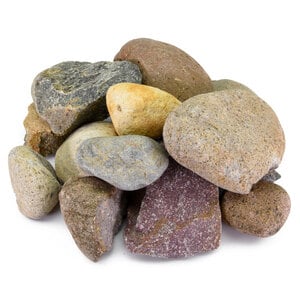Creative Landscape Activities for Kids
Published on: February 21, 2019Teaching Kids About the World – In Your Backyard
Landscaping with stones and fountains not only makes your backyard look nice, but it can also provide a safe environment for children to learn about nature and more. Not only that, but showing them how to use elements found in your yard can help them form connections and associations that spur creativity. Here’s how to get started on some creative landscape activities.
Creative Landscape Activities for Kids: #1 Building Roman Arches Out of Stacked Stones
Like building a house of cards or playing Jenga, building a Roman arch takes strategic thinking and dexterity. But it has an added advantage over those other pastimes – if you succeed, you’ve got a family project to admire and show off with pride!
- Acquaint your kids with Roman architecture through age-appropriate children’s books and educational programming. If there are any arched windows in your home or neighborhood, point those out as examples.
- Once you’ve gauged that there’s the right amount of enthusiasm for the project, assemble your building materials from rocks and stones that you have on-site. If you don’t have the right rocks, stop by Southwest Boulder & Stone to pick up what you need. We’ll be happy to advise you!
- Start small. At the edge of your yard, begin the first arch at ground level and use as few rocks as possible. Don’t be in a hurry – learning depends on planning and problem-solving. Build (no pun intended) on your kids’ success in reasoning and adapting to the materials at hand.
- Consider adapting your materials to the project – shaping stones, and mixing mortar. After all, that’s what the Romans did!
Best Rocks for Stacking:
Creative Landscape Activities for Kids: #2 Diverting Water
Part of being a kid is playing in the water. And thanks to an exceptionally rainy winter season in the Southwest, water – and its diversion to safe areas – is a hot topic. Here are some ways to carve a lesson or two out of their playtime. Because getting kids to use their own senses to determine causation, and to experiment, are some of the most important things you can teach them.
- After heavy rain, have everybody get into their rain boots and slickers and stroll around your property. Ask your kids about what the water is doing. Is it following the runoff channels designed for it, or is it creating new channels in your property? Is it forming muddy areas in your yard? Maybe place leaves at the top of the water source, then time how long it takes them to float to the bottom. Read up! Kids ask all kinds of questions. While it’s only a matter of time before they ask something you can’t answer, it helps to have the top questions taken care of. At Southwest Boulder & Stone, we often assist with the installation of water fountains and ponds, so feel free to ask us questions.
- If you have a water fountain in your yard, creating a dam is relatively easy – the basin of the typical fountain already collects water. Just place stones in your basin and see how high you make the water level on one side of your dam. You might also want to make some paper boats to sail on both sides of the dam and note if there is more “flow” on one side than the other. This is a great activity for very young children.
- With older children, get ambitious. Plan a water-diverting project like a riverbed, a swale or a water garden to keep your home safe while adding interest to your yard.
Popular Stone Fountains:
Creative Landscape Activities for Kids: #3 Creative Expression
Your kids make you finger paintings, which you put on the refrigerator. But have you ever made finger painting with your kids, with watercolors you made yourselves? We know the human need for self-expression goes back to cave paintings, petroglyphs, and stacked rocks as early as tens of thousands of years. Humans first crushed rocks and charcoal to create pigments, with which they recorded their experiences. Here’s how that happens in your backyard.
- Go searching in your backyard for colorful stones to make watercolors. The ones you’re looking for will be gravelly, soft, and easy to grind under your foot. (If you’re having trouble finding these, come to your nearest Southwest Boulder & Stone and we’ll help you get some.) With an eyedropper or maybe even some drips from your fingers, drip a little water on the rock powder (now “pigment”). When you have the right consistency, you’re ready to paint on paper or stone. If it dries while you’re working, just add more water.
- Petroglyphs. Unlike paintings, “glyphs” are carved into rocks. Under the circumstances, it’s a good idea NOT to arm your progeny or even yourself with a chisel, since rocks can be dangerously hard or soft. We strongly recommend using pigments or chalk to “pretend-carve” on the boulders and walls of your yard.
- Stacked stones have been around since time immemorial. They were used for memorials or as mnemonic (“this path is the way home”) devices, and they are still popular. So much so, that conservationists worry that we may be turning our wild places into memorial gardens. This is why stacking and balancing rocks in your backyard is the perfect place to do it. Have the kids search the yard for the perfect rocks to create skyscrapers, teeter-totters, and more. Do remember, however, that the rocks can be heavy. Make sure your children are safe!
























